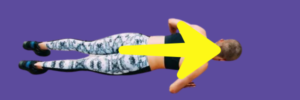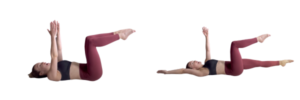For as long as I can remember, I have been confused about why dancers aren’t considered athletes. Almost everyone I have ever spoken to about this concedes that dance is an athletic art form and requires athleticism, yet says that considering dance a sport is a step beyond the truth. It wasn’t until college that someone spoke to me about it in a way that made sense. They said,
“Dancers are athletes, but as soon as we call dance a sport we impose upon it a set of standards that imply competition. Of course, competition dance exists, but that isn’t (largely) why audiences go to see dance. They go to see dance for its artistry which reveals truth, beauty, and empathy to an audience.”
While I do agree that professional dancers aren’t simply athletes but also artists, I think that thinking of dancers only as artists or (in the case of a choreographer) tools for an artist has done a lot of harm when it comes to a dancers idea of cross training, fitness. It’s placed in our lives as athletic artists. When you don’t consider someone an athlete first, you don’t train them like athletes, teaching them about nutrition and gym time. This leads to loads of dancers entering into the professional world without a clue as to how to stay physically prepared to perform despite no longer having a rigorous class or studio schedule keeping them ready. It leads to many a Google search about cross-training for dancers, how long dancers should work out, should dancers lift weights, how to train without getting “bulky,” and so much more. So, let’s dive into some of the gym myths and misconceptions that are holding you back from making progress.
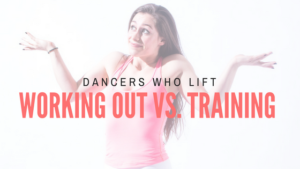
1. Cross-training should look like a dance.
The first of the gym myths that needs busting is probably one of the most persistent offenders. It’s the idea that your cross-training should look like dance. These are your bosu-ball “stability” exercises. They are your “dancer supersets.” These are the workouts that are contributing to your overuse injuries, and these are the workouts that are keeping you lopsided in your training.
According to Healthline.com, the best definition of cross-training is:
“an exercise protocol that utilizes several modes of training that are outside the athlete’s main sport to develop a specific component of fitness.”
This means that, by definition, cross-training cannot be the same as your “sport.” So, a good rule of thumb: if it looks like dance and feels like a dance, it probably is dance – I’m looking at your weighted téndus and sautés! So what does cross-training look like for dancers? The main thing is making sure that you are spending time strengthening muscle groups and stabilizers that often are weaker in dancers. For example, the glutes are largely underdeveloped for dancers. So, adding in some deadlifts, squats, and lunges would be a great way to cross-train that muscle group. Another thing to consider is the positioning of your body. While yes, there are types of squats performed in turn out, we as dancers spend a lot of time there. So, working in parallel could be a better use of our cross-training sessions.
2. Longer is better.
Another major gym myth people (not just dancers) believe is that longer is better. This is completely untrue and leads to people filling their workouts with “junk” to increase the volume of their sessions. The reality is, in fitness, as in life, quality is better than quantity. A longer workout does not equal more work. A workout only needs about five to eight quality movements to train your target muscles for that day effectively. Using a compound movement at the start of your workout (which targets more than one muscle group) and finishing off with a few targeted isolation movements can get you in and out of the gym in less than an hour.
Want a few examples of these? Check out @dancerswholit on Instagram and tiktok for tons of free workouts and training tips!
3. Workouts are punishment for eating.
Of all the gym myths this is the one that has been passed down by our culture generation after generation. It’s perspective that your workouts are punishment for eating something that’s “bad for you” or “being lazy” by taking a day off. The worst part about this is that it implies that workouts are not something that should be enjoyed. Yes, indeed, every workout isn’t “fun.” But they certainly can and should be enjoyed as much as possible! Beyond that, when we go to the gym to “work off” whatever we eat, it reinforces the idea that there are good foods and bad foods. This ultimately damages our relationship with food, which, as we know, often leads us farther away from our goals. For more information on this, check out our blog, “Thinking of Food as Good vs. Bad.” As your trainers, we want you to think of your workout as an opportunity to get closer to your goals and dreams. Thinking of your workout as a tool to get you closer to what you want motivates you to remain consistent. And with consistency comes progress, and with progress comes confidence. So let’s throw away this idea of the gym as punishment and start thinking of time in the gym as a catalyst.
4. You should only lift light weights to stay lean.
This is the last of the gym myths we are busting today and, honestly, I can’t believe it still exists-but, alas, here we are. It’s the trope that you should only lift light weights so that you stay “long and lean.” First of all, what is long and lean, and why is it better? Well, long and lean look different on everyone, so that can’t be defined. And the short answer to the latter? It isn’t better. There are so many types of dance, and these different types of dance require different levels of mobility, strength, and agility. A tapper will train differently than a break dancer, who will train differently than a ballerina. There is no “one size fits all” training style for dancers. Furthermore, it can be confusing to define “lightweight” as “light” completely, depending on how strong a person is. Finally, this mindset negates the amount of work it takes to look bulky. Say it with me,
“Weightlifting is not the same as bodybuilding.”
Bodybuilders spend copious amounts of time and focus on building enough muscle to look the way they do. To fear being bulky from lifting weights in a cross-training program is similar to non-dancers thinking they can audition for ABT after a year of ballet classes at Steps on Broadway. So let’s let go of this archaic way of thinking about weightlifting for dancers. I can tell you from my own experience that after I started lifting weights, multiple pirouettes came easier, my jumps (which were already solid) got even higher, and my landings felt more controlled. No question, lifting weights took me to the next level in my dance training.
So, how many of these gym myths had you previously believed? There are so many benefits cross-training, and specifically weight training, can offer dancers. Dancers Who Lift exists because we have seen firsthand how effective it can be in helping dancers reach their goals. We’d love to welcome you into our community and answer any questions you may have.
Have questions? Shoot us an email at info@dancerswholift.com or send us a DM on Instagram.
We love helping people find the answers to their fitness and dance questions. But even if you choose to take this journey alone, know that we are right here, cheering you on!

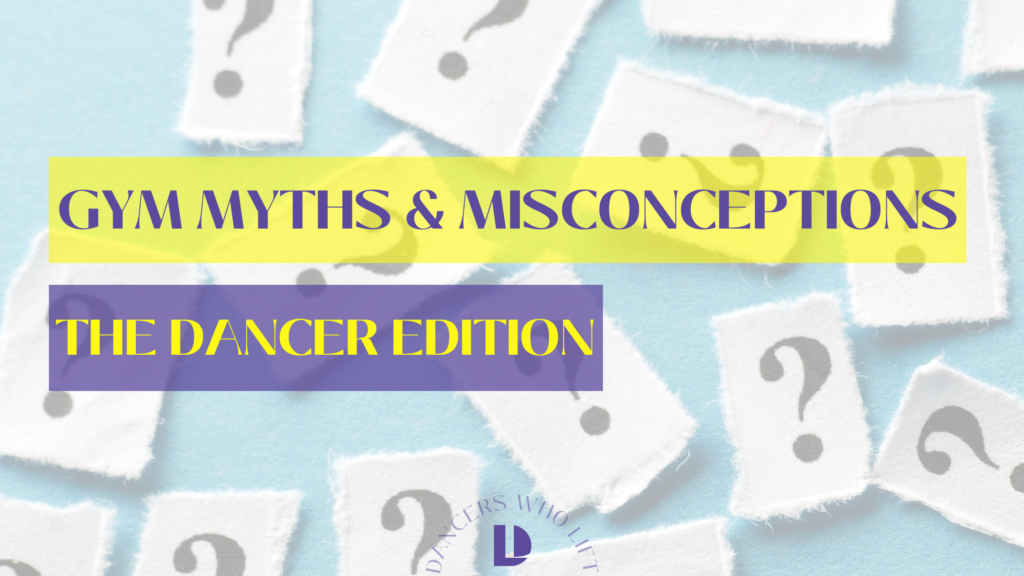




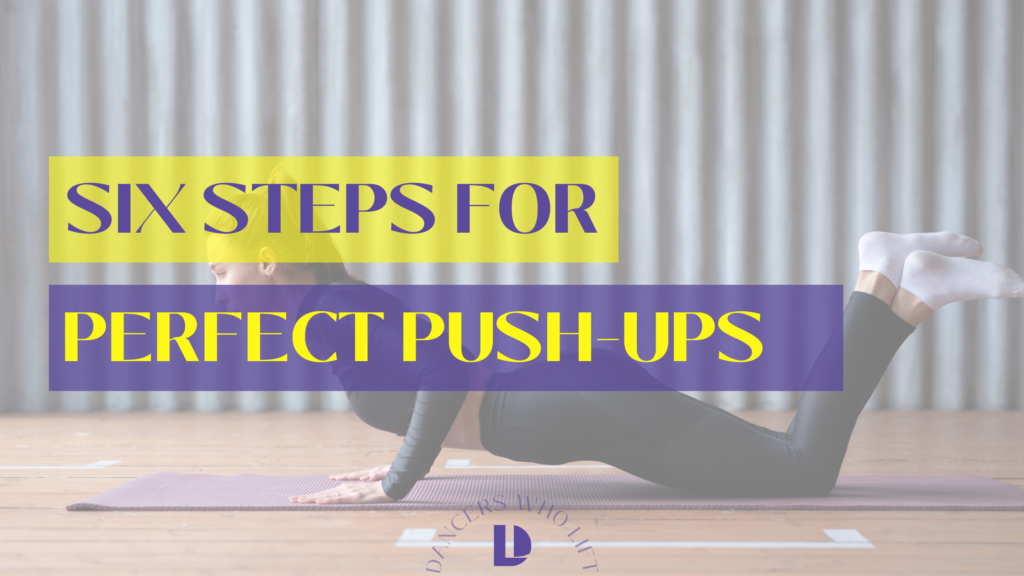
 Push-ups are an exercise everyone expects you to know how to do. From the PE classroom to dance class it’s a movement that we are expected to know how to do despite never being taught. Because of this, push-ups can be incredibly frustrating and beyond challenging. But with a little guidance on form and by following these six progressional movements, you’ll be crushing perfect push-ups like Gaston and Popeye before you know it.
Push-ups are an exercise everyone expects you to know how to do. From the PE classroom to dance class it’s a movement that we are expected to know how to do despite never being taught. Because of this, push-ups can be incredibly frustrating and beyond challenging. But with a little guidance on form and by following these six progressional movements, you’ll be crushing perfect push-ups like Gaston and Popeye before you know it. 